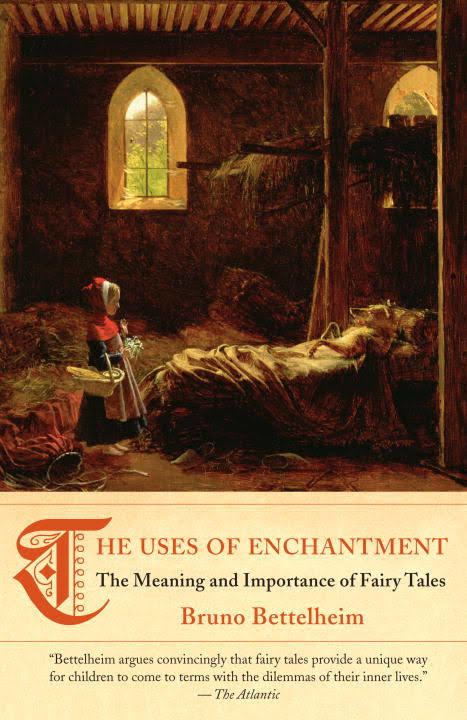7.6 /10 1 Votes7.6
3.6/5 Barnes & Noble Language English Pages 352 Originally published 1976 Page count 352 Subject Fairy tale | 3.9/5 Goodreads Country United States Publication date 1976 ISBN 978-0-14-013727-9 Genre Literary criticism | |||||||||||||||||||||||||||||||||
 | ||||||||||||||||||||||||||||||||||
Awards National Book Award for Contemporary Thought, National Book Critics Circle Award for Criticism Similar Works by Bruno Bettelheim, Child books | ||||||||||||||||||||||||||||||||||
Heidi julavits the uses of enchantment talks at google
The Uses of Enchantment: The Meaning and Importance of Fairy Tales is a 1976 book by Austrian-born American author Bruno Bettelheim, in which Bettelheim analyzes fairy tales in terms of Freudian psychoanalysis.
Contents
- Heidi julavits the uses of enchantment talks at google
- Structure and contents
- Reception and influence
- References
Bettelheim presents a case that fairy tales helps children solve certain existential problems such separation anxiety, oedipal conflict, and sibling rivalries. The extreme violence and ugly emotions of many fairy tales serve to deflect what may well be going on in the child's mind anyway. A child's unrealistic fears often require unrealistic hopes. And furthermore, "The Frog King" may be superior to modern sex education in that it acknowledges that a child may find sex disgusting, and this may serve a protective function for the child.
Structure and contents
The book is divided into two main sections. The first, "A Pocketful of Magic," outlines Bettelheim's thoughts on the value of fairy tales for children. The second part, "In Fairy Land," presents psychoanalytical readings of several popular fairy tales, specifically:
Reception and influence
In the U.S., Bettelheim and The Uses of Enchantment won the 1976 National Book Critics Circle Award for Criticism and the 1977 National Book Award in category Contemporary Thought.
Robert A. Segal writes, ""It is the disjunction between Bettelheim's up-to-date approach to fairy tales and his old-fashioned approach to myths that is striking."
In the Winter 1991 edition of the peer-reviewed Journal of American Folklore, Alan Dundes, a 28-year-old veteran in the anthropology department at the University of California, Berkeley, presented a case that Bettelheim had copied key passages from A Psychiatric Study of Myths and Fairy Tales: their origin, meaning, and usefulness (1963 and rev. ed. 1974) by Julius Heuscher without giving appropriate credit, as well as unacknowledged borrowing from other sources.
Dundes states that Bettelheim engaged in "wholesale borrowing" of both "random passages" and "key ideas," primarily from Heuscher's book, but also from other sources. Heuscher himself stated that he was not bothered by the disclosures. Robert A. Georges, a professor of folklore at UCLA, states "it is clear he [Bettelheim] didn't do his homework."
Dundes also states that his own 1967 article on Cinderella was borrowed by Bettelheim without acknowledgement. Jacquelyn Sanders, the director of the Orthogenic School at the University of Chicago in 1991, said she did not believe many people would agree with Dundes's accusations. She stated, "I would not call that plagiarism. I think the article is a reasonable scholarly endeavor, and calling it scholarly etiquette is appropriate. It is appropriate that this man deserved to be acknowledged and Bettelheim didn't. . . . But I would not fail a student for doing that, and I don't know anybody who would [ellipses in Chicago Tribune article]."
The Uses of Enchantment has been cited as an influence in many subsequent works that utilise fairy tales in adult terms, including the 2011 Catherine Hardwicke film Red Riding Hood and the 2014 fantasy horror film Red Kingdom Rising. It was claimed by Stephen Sondheim and James Lapine as the inspiration for their 1986 musical Into the Woods.
